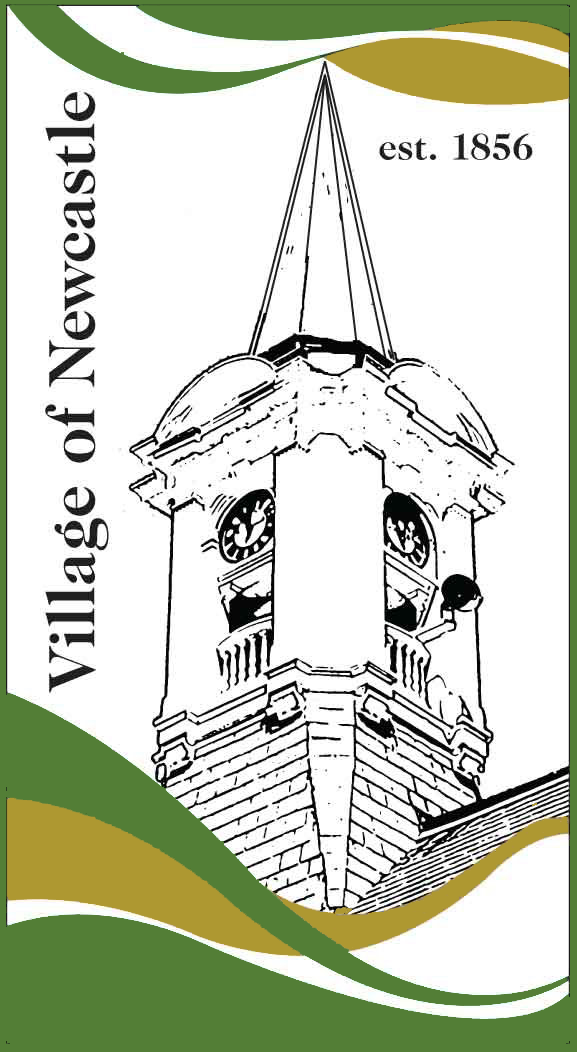History
Main Street, Newcastle, Ont., Canada.

History
The Historic Village of Newcastle
With its phenomenal growth in recent years the history of Newcastle Village is a popular topic. Many new residents are eager to learn fascinating facts and long-time residents are interested in preserving the past of their community. Newcastle has seen times of growth before and it has been through tough times too. Newcastle’s history also includes the community of Bond Head along the shore of Lake Ontario. These two communities grew into the Newcastle we know today and it was here that some of the most important pioneers chose to settle.
In 1796 Richard Lovekin came from Ireland to settle in Clarke Township near where the Village of Newcastle would one day stand. He came to an unbroken pristine wilderness. Large trees obscured the sun at midday and wild animals were plentiful. The Lovekin Family still live on their original farm. They have been on this land for 215 years! This is the longest tenure of a property owned by one family in Canada outside of the Province of Quebec.
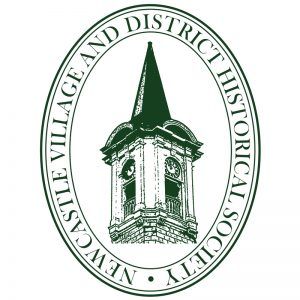
Newcastle Settlement
The settlement of Newcastle proper began in 1833 when Stephan Crandell opened a tavern in the forest.
This was near the present King Ave and Mill Street intersection. In 1835 he was joined by Ezra Shelley who opened up a shop nearby. This little settlement became known as Crandell’s Corners and about the same time another community to the south, Port Bond Head, began to grow. In 1839 work began on a pier by the Bond Head Harbour Company. The directors envisioned a large community with a busy harbour, but it never overtook Crandell’s Corners. Crandell’s Corners, soon to be renamed Newcastle, was strategically located on the Danforth Road (present day Highway # 2). This was the main east west thoroughfare. Also, some settlers felt the lake marshes were conducive to fever and sickness and stayed away from the lake front. In 1851 the two communities, Bond Head and Newcastle amalgamated as the Village of Newcastle. Although Bond Head retained its original name, in common usage it was referred to as Port Newcastle or Newcastle Harbour.
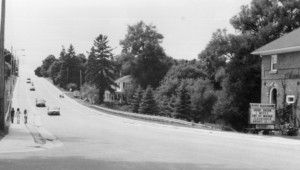
The Village Grows
By 1845 Newcastle boasted over 300 people
By 1845 Newcastle boasted over 300 people, 2 churches, 8 stores, 1 druggist, 2 tanneries, 2 taverns, 1 axe factory, 2 saddlers, 4 blacksmiths, 2 wagon makers, 4 tailors, and 2 shoemakers. The growth was spurred on by the arrival of the Grand Trunk Railway in 1856. Northrop and Lyman, a large patent medicine business, began here (Henry S. Northrop’s house can still be seen at 261 Mill St. S.).
One of the largest woollen mills in Upper Canada was built here, but it was short-lived. As well, Daniel Massey set up his implement shop in town and it grew so much that by 1879 they had outgrown the village and moved to Toronto (The main building from the Massey complex is now apartments and is located near the Foodland grocery store). Northrop and Lyman also moved to Toronto and the Woollen mill burned. The population of the village had grown to over 1200, but as the larger industries left the population dipped to under 800 people. In 1896 two fires destroyed most of the downtown and Newcastle’s future as a sleepy village was ensured.
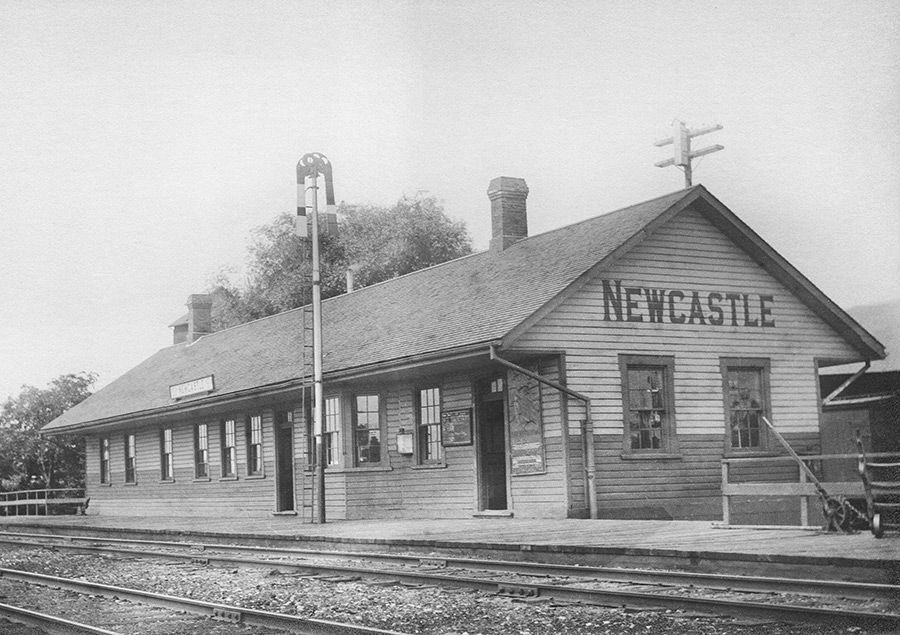
Slide title
Write your caption hereButton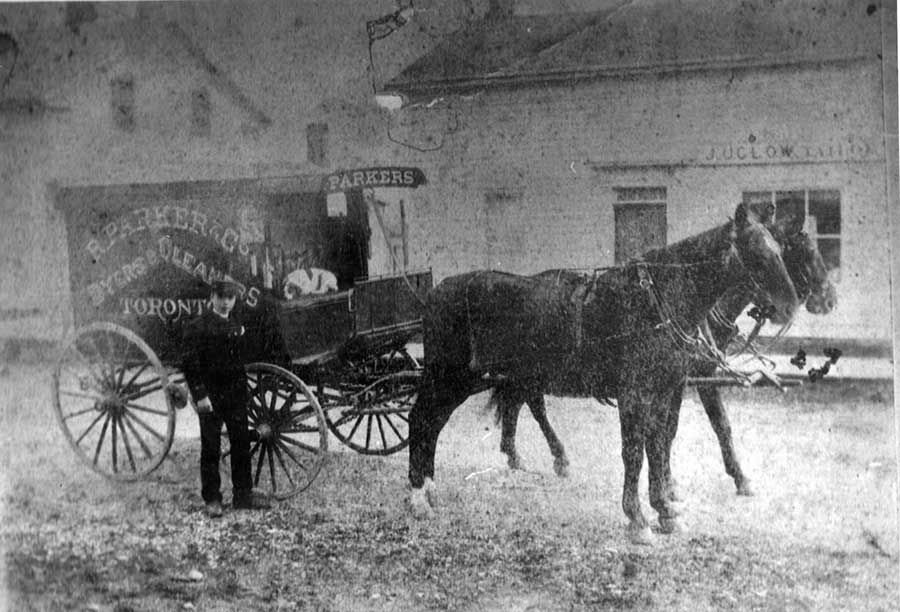
Slide title
Write your caption hereButton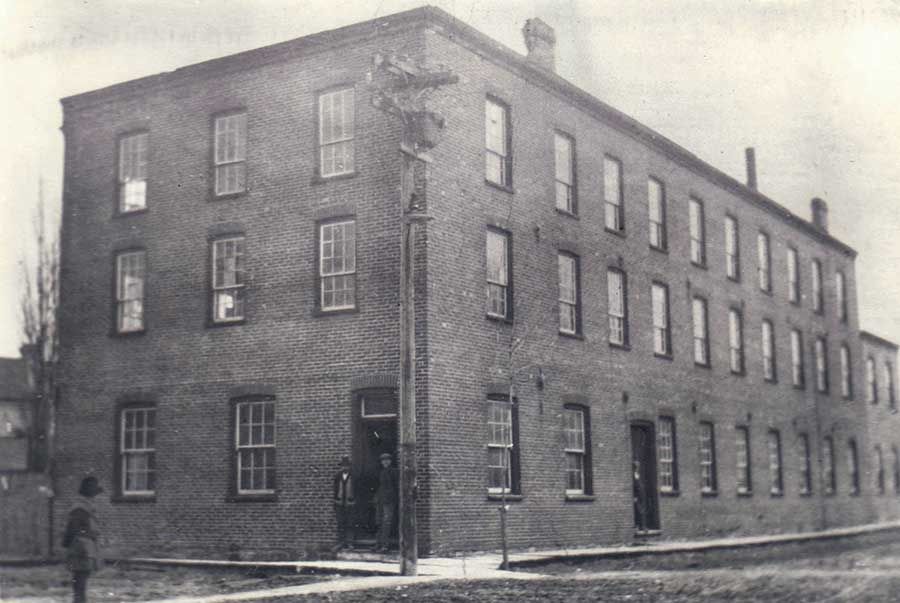
Slide title
Write your caption hereButton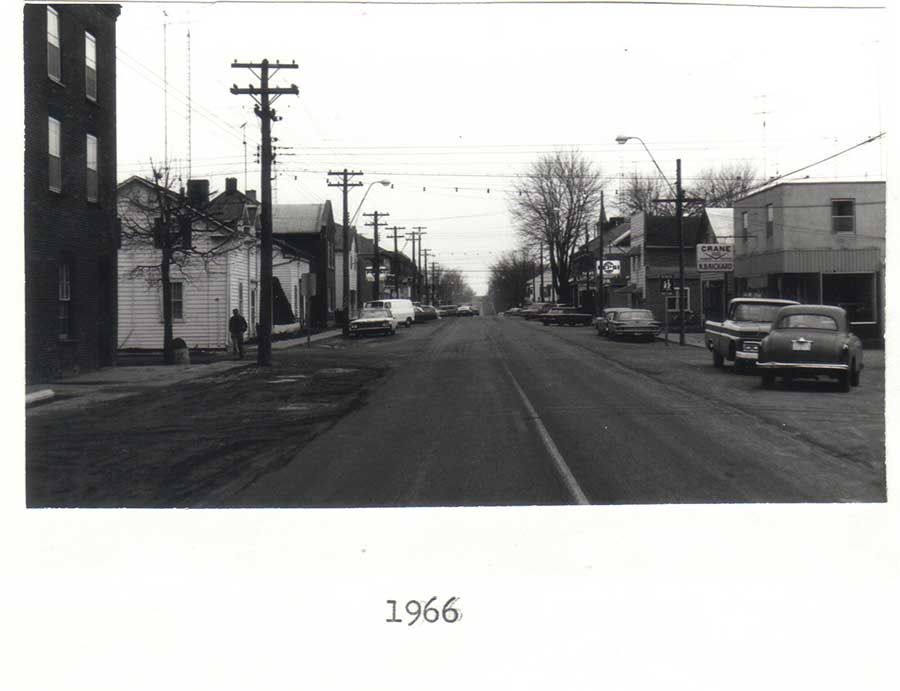
Slide title
Write your caption hereButton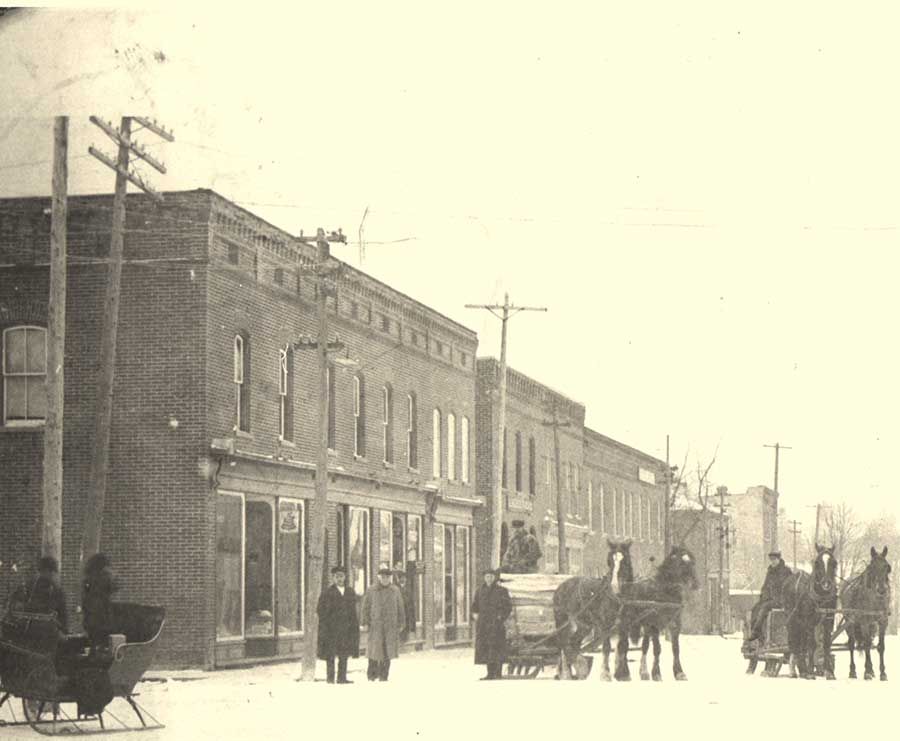
Slide title
Write your caption hereButton
Historical Plaques
Newcastle is home to more Provincial Historical Plaques than anywhere else in Clarington.
This was near the present King Ave and Mill Street intersection. In 1835 he was joined by Ezra Shelley who opened up a shop nearby. This little settlement became known as Crandell’s Corners and about the same time another community to the south, Port Bond Head, began to grow. In 1839 work began on a pier by the Bond Head Harbour Company. The directors envisioned a large community with a busy harbour, but it never overtook Crandell’s Corners. Crandell’s Corners, soon to be renamed Newcastle, was strategically located on the Danforth Road (present day Highway # 2). This was the main east west thoroughfare. Also, some settlers felt the lake marshes were conducive to fever and sickness and stayed away from the lake front. In 1851 the two communities, Bond Head and Newcastle amalgamated as the Village of Newcastle. Although Bond Head retained its original name, in common usage it was referred to as Port Newcastle or Newcastle Harbour.
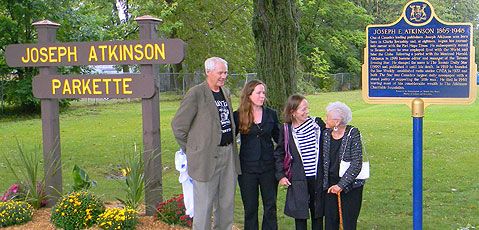
Historical Plaques
-
Joseph E. Atkinson
This Plaque was dedicated on August 5, 1973. Mrs. J.H. Crang Jr., grand-daughter of Joseph Atkinson was present along with Harry Jose, Cecil Carveth (who promoted the plaque) Rev. Robert Hayne, Alex Carruthers, MPP Durham and Pauline Storks who gave a historical background.
Joseph E. Atkinson ( 1865-1948)
One of Canada’s leading publishers, Joseph Atkinson was born here in Clarke Township and, at eighteen, began his journalistic career with the Port Hope Times. He subsequently moved to Toronto where he was employed with the World and later the Globe. Following a period with the Montreal Herald, Atkinson, in 1899 became Editor and Manager of the Toronto Evening Star. He changed the name to the Toronto Daily Star (1900) and published it until his death. In 1910, he founded the Star Weekly, established radio station CFCA in 1922 and built the Star into Canada’s largest daily newspaper with a stated policy of supporting “the little man”. He died in 1948 leaving most of his considerable wealth to the Atkinson Charitable Foundation.
-
The Baldwin Homestead
This plaque was placed on the former Baldwin property near the Lakeshore and mouth of Wilmot Creek and dedicated in 1963. As of 2006, this plaque had been removed by unknown persons and could not be located. The original plaque stated; The Baldwin Homestead
On this lot settled Robert Baldwin, Sr. (1741-1816) who emigrated to Upper Canada from Ireland in 1798. He served as a justice of the peace and a commissioner of roads for the Newcastle District. Appointed Lieutenant of the County of Durham, he was also in command of the local militia. In 1810, he moved to York to live with his son, Dr. W.W. Baldwin, a successful lawyer and physician who became a leading political reformer. The latter’s son, Robert Baldwin, Jr. was joint premier with Louis Lafontaine of the Province of Canada 1842 43 and 1848-51. “Erected by the Ontario Archaeological and Historic Sites Board.
-
The Masseys at Newcastle
The Masseys at Newcastle Dedicated in June, 1984, unveiled by Mrs. Louis Breithaupt, great-niece of Chester Massey and Brian Long, President of Combines & Farm Equipment, Massey Ferguson Ltd. The plaque, sponsored by the Newcastle Village & District Historical Society, is located at King Ave. East and Beaver Street. This property was also known as “The JASCO Box Factory” for many years after the Masseys left.
The Masseys at Newcastle One of the world’s largest manufacturers of heavy farm machinery, Massey –Ferguson has its foundations in a modest family business developed in Newcastle. Established in Bond Head by Daniel Massey, the fledgling operation was moved to larger quarters here in 1849. For 30 years the Newcastle Foundry and Machine Manufacturer prospered under the shrewd management of three generations of enterprising Masseys. Capitalizing on the expanding wheat market, Hart, Daniel’s son, skillfully adapted American designed implements to suit Canadian agrarian conditions. When sales were secured in Europe, marking Canada’s first export of machinery overseas, continued expansion of the firm was ensured. By 1879 the operation had outgrown its Newcastle factories and the Massey Manufacturing Company, now managed by Hart’s son Charles, moved to larger facilities in Toronto.
-
Bishop Brent Plaque
Bishop Brent Plaque located at Mill Street South at St. George’s Anglican Church-It was unveiled by W. Scott Brent, nephew of Bishop Brent on March 27, 1979, on the 50th Anniversary of Bishop Brent’s death.
Bishop Charles Henry Brent (1862-1929) An outstanding humanitarian and churchman, Brent was born near Newcastle and ordained in Toronto in 1887. Following parochial service in Buffalo and Boston, he was elected first Episcopal Bishop of the Philippine Islands in 1901. Confronted by the devastating moral and physical effects of opium addiction, Brent became an uncompromising advocate of drug control. He urged international co-operation in eradicating drug abuse and served as president of the Opium Commission at Shanghai (1909) and the Opium Conference at The Hague (1911-12). Elected Bishop of Western New York in 1917, Brent vigorously promoted Christian unity and, in 1927, presided over the World Conference on Faith and Order. This ecumenical gathering at Lausanne, Switzerland, helped to lay the foundation of the World Council of Churches. Erected by the Ontario Heritage Foundation, Ministry of Culture and Recreation.
-
Newcastle Fish Hatchery
Newcastle Fish Hatchery 1868- The Fish Hatchery was located on Wilmot Creek near Highway Two (just east of Hwy 115). It was unveiled on September 13, 1967 by Mrs. Olive Thorne, grand daughter of Samuel Wilmot.
Newcastle Fish Hatchery 1868
On this site in 1866 Samuel Wilmot began to experiment with the artificial breeding of salmon. His success led the federal government in 1868 to enlarge Wilmot’s project into Ontario’s first full scale fish hatchery, one of the earliest in North America. The station and rearing ponds, built to restore Ontario’s declining salmon fisheries, reached its maximum production in 1876 when 1,500,000 eggs were hatched. By this time hatcheries were in operation in Quebec, Ontario and the Maritimes, under Wilmot’s’supervision. In 1876, he was appointed federal Superintendent of Fish Breeding Establishments. The Newcastle Hatchery, which had established a pattern for fish culture in many parts of the world, ceased operation in 1914.
Archeological and Historic Sites Board of Ontario
Clarington Museums and Archives
By 1845 Newcastle boasted over 300 people
The museum has extensive local holdings that cover all of Clarington. Research fees range from $10.00 per request for visitors to $25.00 per hour if you’d like us to do the research for you. But, it doesn’t cost anything to call our archivist to inquire if we can help you with your historical or genealogical research. For local history and genealogy requests contact the Clarington Museums and Archives. For general inquiries email info@claringtonmuseums.com or call 905-623-2734
“Article courtesy of Charles Taws, formerly of Clarington Museums and Archives”
The Newcastle Village and District Historical Society
If you would like to get a glimpse into some of Newcastle’s history, visit the Newcastle Village & District Historical Society located in the original library inside our Community Hall. The Society is open Tuesday and Saturday mornings from 9:30 to 12:00 pm and holds some unique and intriguing local artifacts as well as many historic records and photos. Consider becoming a member (for as low as $10 a year) to receive quarterly newsletters featuring articles on the history of Newcastle. Membership includes the opportunity to attend evenings with guest speakers.The room is open to anyone at no charge and volunteers are available to help with research you may be doing.
Visit their website here
20 King Ave W., Newcastle – within the Newcastle Community Town Hall
https://newcastlehistorical.ca


